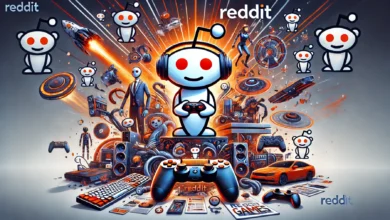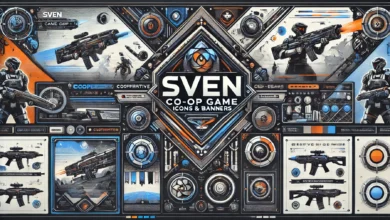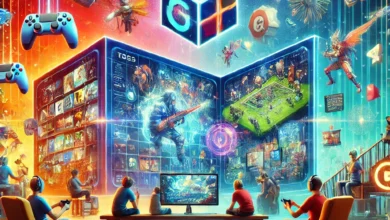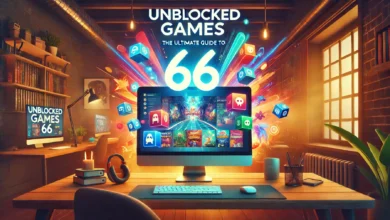Minecraft (2009) Game Icons and Banners – A Comprehensive Guide
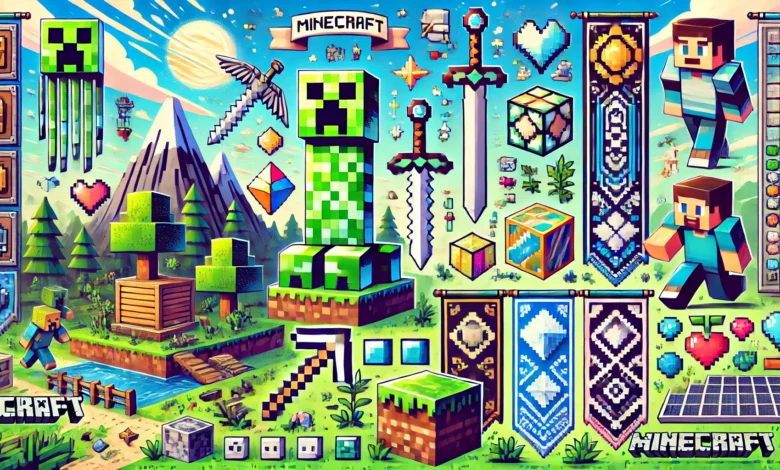
Minecraft, initially released in 2009, is one of the most successful and long-lasting video games in history. Its unique blend of open-world exploration, resource gathering, crafting, and building mechanics has attracted millions of players across the globe. However, while many players focus on the expansive gameplay, there’s another aspect of Minecraft that is essential but often overlooked: game icons and banners. These elements, though seemingly simple, contribute significantly to the player experience and the game’s vast customization options.
In this comprehensive guide, we’ll dive into the history, importance, and evolution of Minecraft (2009) game icons and banners, their role in gameplay, and how they enhance both functionality and creativity. This article will explore every aspect of game icons and banners, from their earliest implementations to their current significance in Minecraft today.
1. Introduction to Minecraft (2009)
Minecraft was first created by Markus Persson, known as “Notch,” and officially released in 2009 as a beta version. With a simple premise—survive, mine, and build—players immediately saw the potential for creative freedom in the game. Minecraft quickly grew from a small indie project into one of the most successful games in history, with over 200 million copies sold across various platforms.
While the gameplay itself is focused on resource collection, exploration, and building, the game is also known for its unique aesthetic—a world entirely made of blocks. The game’s interface and visual design, particularly game icons and banners, are essential to enhancing the player’s ability to interact with the world and personalize their experience.
2. What Are Game Icons in Minecraft?
In the world of Minecraft, game icons serve as visual representations of in-game items, blocks, tools, and achievements. These icons are displayed in the player’s inventory, crafting menu, and other user interfaces, helping players navigate the complex world of crafting and building.
Evolution of Game Icons in Minecraft
When Minecraft was first launched in 2009, the game icons were incredibly simple. The early icons were designed to fit the minimalist, pixelated style of the game and were easy to understand, even though they lacked the detail and sophistication of later designs. Some of the first icons players saw included basic tools (such as the wooden pickaxe) and basic blocks like dirt, wood, and cobblestone.
As the game evolved and new features were added, so too did the game icons. By 2011, Minecraft had introduced a greater variety of blocks and items—such as ores, tools, and food—each of which required its own distinct icon.
The Importance of Game Icons in Navigation
Game icons are essential in making the game accessible to players. They are the visual cues that help players navigate menus, craft new items, and locate essential resources within the game. With the vast array of items and tools available in Minecraft, these icons make it easier to interact with the game’s complex systems.
In the early days of Minecraft (2009), the game was primarily text-driven. Players relied on written descriptions of items to understand their purpose. However, as the game grew and its mechanics became more intricate, visual representations (i.e., icons) were needed to enhance gameplay. Today, game icons in Minecraft are not only functional but also contribute to the overall aesthetic of the game, making it easier and more enjoyable to play.
Crafting and Customization with Game Icons
One of the most important aspects of Minecraft is its crafting system, which relies heavily on game icons. Players craft items by combining various materials in specific patterns. The game icons used to represent crafting recipes are vital in guiding players through this process.
For example, to craft a wooden pickaxe, players must use three wooden planks and two sticks. The icon for each material is placed in specific slots in the crafting grid to complete the recipe. Over the years, these icons have been updated to provide clearer and more intuitive designs.
3. Understanding Banners in Minecraft
While game icons primarily serve a functional purpose, banners in Minecraft (2009) are all about creativity and self-expression. Introduced in the 1.8 update in 2014, banners offer a new way for players to customize their world. Players can create unique designs using different dyes and patterns, making banners a powerful tool for personalization.
What Are Minecraft Banners?
Banners are decorative, tall, flag-like items that players can place on walls, shields, and other surfaces. They serve both aesthetic and functional purposes. Banners can be crafted using wool and sticks, and dyes are applied to create different patterns.
The Crafting Process and Materials
To craft a banner in Minecraft, players need six wool and one stick. The wool can be dyed into any color, and this dye influences the design of the banner. The player can then use a crafting table to combine the wool and stick, creating a basic banner. After crafting the banner, players can apply additional patterns using dyes, making it as intricate and personalized as they desire.
Banner Customization: Endless Possibilities
Banners in Minecraft allow for a high degree of customization. With up to six layers of patterns, players can create millions of unique banner designs. These patterns include stripes, crosses, borders, and other shapes that can be mixed and matched.
Players can also use various combinations of dyes to achieve a wide range of colors and effects. This customization aspect has made banners an essential tool for many players, especially in multiplayer servers where factions, clans, and guilds often design custom banners to represent their groups.
Banners in Multiplayer and Roleplay Servers
Banners have become a key element of multiplayer servers, particularly in roleplay and faction-based servers. Players often create banners to represent their groups, territories, and alliances. For example, a faction may design a banner with specific colors and symbols to represent its identity, helping to establish a sense of belonging and pride among its members.
In addition, banners can be used to mark important locations in Minecraft, such as bases, outposts, and event venues. On roleplay servers, banners are used to decorate towns, castles, and other structures, adding to the immersive experience.
4. The Role of Icons and Banners in Minecraft’s User Interface
Both game icons and banners play significant roles in Minecraft’s user interface (UI). While icons are used for navigation and crafting, banners are employed more for customization and aesthetic purposes. Together, they create a seamless experience for the player.
Inventory and Crafting Menus
The game’s inventory and crafting menus rely heavily on icons to help players organize their resources and create new items. As players gather materials, the corresponding icons appear in the inventory, allowing them to quickly identify what they have at their disposal. The crafting menu uses a grid of icons to guide players through the process of creating new tools, blocks, and other items.
UI Navigation and Accessibility
In addition to inventory and crafting, game icons play a vital role in navigating the game’s UI. Menus, achievement tracking, and in-game notifications are all made easier through the use of clear, recognizable icons. This is especially important in a game as complex as Minecraft, where players are often required to interact with numerous systems at once.
Icons in Achievements and Milestones
Achievements and milestones are a core part of the Minecraft experience, and icons are used to represent these milestones. When a player unlocks an achievement, an icon is displayed, signaling their success. These icons serve as visual rewards for the player’s efforts and encourage further exploration and goal-setting.
5. The Impact of Game Icons and Banners on Player Experience
While many players focus on the broader gameplay mechanics of Minecraft, the role of game icons and banners in shaping the player experience cannot be overstated. These elements go beyond mere decoration or utility; they enhance both the functionality of the game and the level of creativity available to players. Let’s take a closer look at how these components impact gameplay.
Customization and Personalization
One of the key aspects that sets Minecraft apart from many other games is its level of customization. Minecraft is not just a game; it’s a platform for players to express themselves. Game icons and banners play a huge role in this process.
- Game Icons: The inventory icons, crafting icons, and other visual representations make it easier for players to organize and customize their resources. Players can alter their inventory layout to their preferences, ensuring that their most-used tools are readily available. Furthermore, Minecraft allows for the customization of tool and armor icons through mods or texture packs, providing players with endless possibilities to modify the look and feel of the game to their liking.
- Banners: Banners in Minecraft are one of the most prominent ways players can personalize their worlds. From designing flags for their homes, factions, and kingdoms to creating unique shields with their banners, the creativity behind banner design knows no bounds. Some players go even further by using banners to represent real-world flags, famous symbols, or their personal artwork. For multiplayer servers, this customizability extends to in-game identity, allowing factions or groups to represent themselves in ways that are meaningful to them.
Enhancing Creativity with Banners
Banners are a unique feature of Minecraft that enhances player creativity. Unlike many other games, Minecraft gives players the tools to create their own visual elements directly in the game.
- Designing Banners: Through the combination of dyes, patterns, and layering techniques, players can create intricate and detailed designs that reflect their creativity. Banners can be designed to evoke themes such as medieval heraldry, modern aesthetics, or even abstract patterns. Players can also use Minecraft’s crafting system to add symbols, icons, and emblems to their banners, contributing to a deeper level of personalization.
- Artistic Expression: The freedom to create banners with complex designs allows players to engage in pixel art creation within the game. Many talented Minecraft players have used banners to recreate famous works of art, such as the Mona Lisa or iconic video game characters. Banners also have a functional aspect when placed in a multiplayer server, where they can represent clubs, guilds, or even personal identity.
Iconography as a Communication Tool
Beyond their aesthetic role, Minecraft (2009): game icons and banners are integral in communication within the game. Icons and banners convey crucial information, making it easier for players to understand game mechanics and each other’s intentions.
- Game Icons: Icons are essential for guiding players through the game’s crafting recipes and inventory system. In a game as vast as Minecraft, these visual cues allow players to quickly grasp the meaning of various items and understand their interactions within the game world. Whether crafting tools, farming, or interacting with villagers, game icons give players the necessary context to make informed decisions.
- Banners as Markers and Symbols: Banners are often used to communicate territory ownership, allegiance, or even personal achievements. In multiplayer servers, banners can indicate faction territories, guild areas, or group events. For example, a banner with a specific color scheme and pattern might signify an alliance, while different banners with other designs could denote rival factions. Banners can also serve as memorials, marking important locations like battlefields, spawn points, or key structures.
6. The Evolution of Game Icons and Banners: A Timeline
As Minecraft has evolved over the years, so too have game icons and banners. Their development has paralleled the growth of the game itself, with updates and community input shaping their design. Let’s take a look at the evolution of game icons and banners in Minecraft.
Early Days of Minecraft (2009) and the Simplicity of Icons
When Minecraft first launched in 2009, the game was in its early beta phase. The icons were simple, pixelated, and rudimentary. There were only a few essential items in the game at that time, such as dirt, wood, and stone, which each had a corresponding icon. These early icons were functional but not detailed. The game’s visual focus was on the blocky world rather than complex item designs.
The Introduction of Banners in 2014
Banners were introduced in the 1.8 update (released in 2014), marking a significant milestone in the game’s development. The ability to craft and customize banners added a new layer of creativity to the game. With the ability to use dyes and patterns, players could now make their own flags, shields, and other decorative items. The introduction of banners further solidified Minecraft as a platform for personal expression.
How the Community Influenced Icon and Banner Development
A key aspect of Minecraft’s growth has been its passionate community. The game’s development has been influenced by the ideas and feedback of its player base. The creation of custom game icons through texture packs and the use of banners for various purposes in multiplayer servers have all played a role in shaping the game’s evolution.
With the introduction of modding tools, players began creating custom icons and banners for their own worlds, and many of these creations found their way into the mainstream. The growing demand for personalization options has led to continuous updates that refine and expand both game icons and banners. For example, mods like Optifine allow players to create unique icon sets, while Minecraft’s official updates have introduced more banner patterns and designs to keep the game fresh and engaging.
7. Using Minecraft Banners for Marketing and Branding
As Minecraft has grown into a global phenomenon, banners and game icons have also become tools for marketing, branding, and merchandising. Let’s explore how these elements are used in a broader context.
Banners for Server Customization
In multiplayer servers, custom banners have become an essential aspect of server branding. Server owners often create custom banners to represent their unique server identity. These banners are used in a variety of ways:
- Server Logos: Banners are used as part of the server’s logo or branding to create a consistent visual identity.
- Advertising: Custom banners featuring the server’s name or theme can be displayed throughout the world, drawing attention and increasing recognition.
Custom Banners for Merchandising
The popularity of Minecraft has also led to the creation of custom merchandise that features game icons and banners. These designs can be found on T-shirts, posters, mugs, and other items. Players have the opportunity to wear their custom banners or favorite in-game symbols, turning the game’s iconic imagery into real-world fashion statements.
Iconography in Fan Art and Promotional Materials
Both game icons and banners have found their place in fan art and promotional materials. Artists often incorporate Minecraft’s iconic designs into their work, whether it’s for posters, YouTube thumbnails, or even advertisements. The simplicity and recognizability of the game’s icons make them ideal for marketing purposes, while banners often appear as part of larger thematic designs.
8. Minecraft Icons and Banners in the Future
As Minecraft continues to grow and evolve, there’s no doubt that game icons and banners will continue to play a significant role in the game’s development. With the introduction of new updates, community-driven features, and creative tools, the future of icons and banners is exciting.
Upcoming Changes and Developments
While updates have continually expanded the game’s iconography, it’s likely that future updates will introduce even more complex and diverse icons to accommodate new features. With the continued addition of new blocks, items, and mechanics, the Minecraft (2009) game icons will evolve to match the expanding world.
As for banners, it’s possible that future updates may add even more customization options. The introduction of new banner patterns, the ability to mix multiple designs, or the possibility of animated banners could bring further depth to this already vibrant feature.
Community Innovations and Future Possibilities
The Minecraft community has always been a major driving force behind the game’s evolution. As long as players continue to create mods, custom textures, and new banner designs, the possibilities for customization and innovation are endless. Players will continue to find new ways to incorporate game icons and banners into their worlds, shaping the game’s future in unique and creative ways.
Conclusion
From the very first release in 2009, Minecraft has captivated players with its open-ended creativity and immersive gameplay. While the game’s expansive mechanics and world-building features are often the focus, game icons and banners are integral to the experience, enhancing gameplay, customization, and personalization.
As we’ve seen throughout this article, game icons serve practical purposes in navigation and crafting, while banners allow players to unleash their creativity, whether they’re creating their own unique designs or marking territories in multiplayer worlds. These elements contribute to the player experience, making Minecraft a game that feels uniquely personal for each player.
The evolution of Minecraft (2009): game icons and banners has paralleled the growth of the game itself, and their importance will continue to rise as Minecraft continues to adapt to new technologies, player demands, and community-driven innovations. Whether you’re a casual player or a seasoned Minecraft enthusiast, these visual elements will remain a cornerstone of the game’s charm and appeal, enhancing both the player’s immersion and creative freedom within the game.
